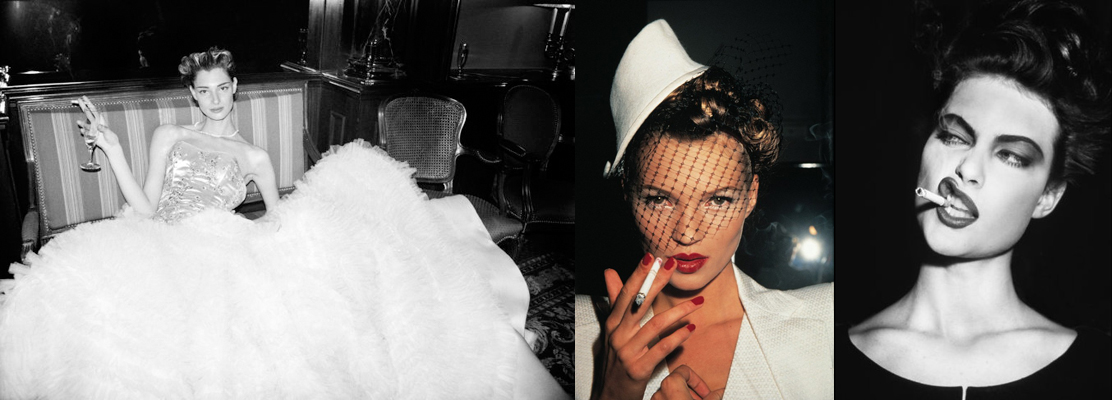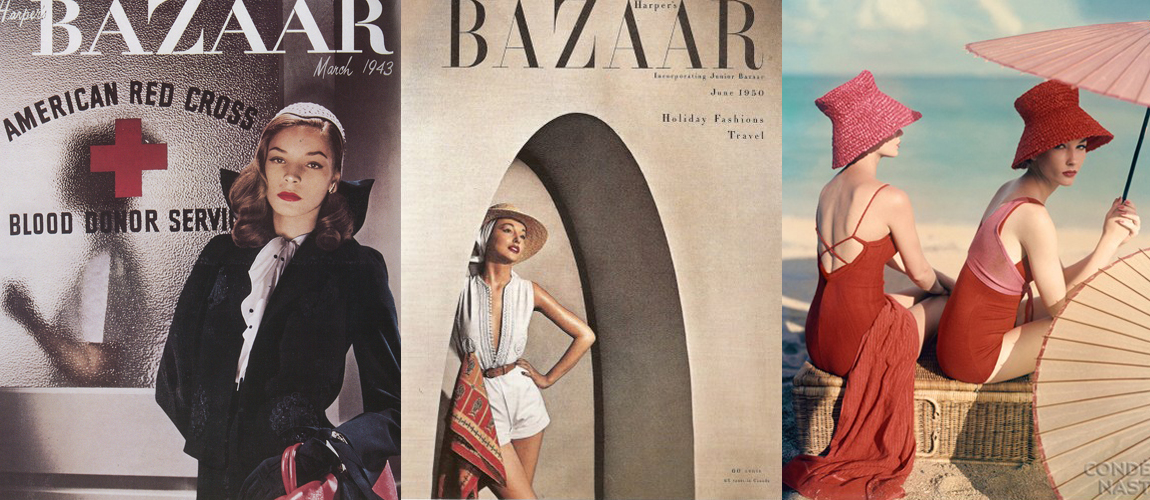Flipping through magazines today, you will find no shortage of talented ladies behind the lens. Try typing “female photographer” into Wikipedia and you will get a list of about 200 names. But while we all (rightfully) praise Ellen von Unwerth, here are five other major female photographers who have shaped the fashion images we see today.
ROXANNE LOWIT
Make no mistake, Roxanne Lowit is a top photographer, with a decades-long career of working on planned shoots for magazines and campaigns for both fashion designers and retailers. But Lowit’s real impact on the industry comes from her stunning photos from private events and from backstage at fashion shows.
In a time shortly before everyone had a camera with them at all times (hello, smart phone), and blogs required near-constant and exclusive material, Lowit was granted access that few others had. However, with all of the competition she has today, no one can quite capture a moment – all the energy, emotion and movement – in stillness quite like she can. Lowit is gifted with an eye for the art of her surroundings, making her spontaneous shots as glamorous and iconic as staged editorials. For more information, check out her website: www.roxannelowit.com
LILLIAN BASSMAN
Bassman was somewhat of a photo re-touching pioneer, most often playing with extreme contrast. She did not invent the re-touching of photos, nor was she the first to use these techniques, but creatively altering her photos became somewhat of a signature. We live in a time when almost all fashion photos are, in some way, digitally retouched; but in a time before Photoshop, a photographer had to physically make changes to the photos in the developing process. She would even apply bleach to her photographs to get blown-out whites.
While Bassman is most famous for her lingerie photography, she shot all types of fashion. After viewing her work it comes as no surprise that before photography, Bassman studied illustration and graphic design, and worked as an art director. Her high-contrast lighting, focus on lines and interesting angles captured women in a sensual, ethereal way. By double exposing images or playing with extreme shadows her models took on ghostly images, seeming to float or glow brightly. If there is a line between graphic design and photography, Bassman blurred it, bleached it and hand made one hell of a striking image.
DEBORAH TURBEVILLE
The self taught Turbeville was known for her dark and moody style of photography – something that stood out against the typical fashion images of the 1970’s. Decaying rooms in run-down buildings was her typical choice of setting, and she particularly excelled in finding beauty in abandonment. Her photographs were thematic – there was always something going on, as if the viewer has come upon a scene. Like Lillian Bassman before her, Turbeville liked to physically alter her photos – aging them, ripping them, and putting them back together. Adding to their initial darkness, this artificial deterioration gave her images an intimate quality, as if they were a forgotten memory.
Sadly, Turbeville passed away earlier this year, but she was a steady working photographer right up until her death. Turbeville shot Valentino campaigns and editorials for Vogue Italia, retaining her artistic dark style even after switching to digital photography (which is not something many of her contemporaries could do).
LOUISE DAHL-WOLFE
Famously employed by Harper’s Bazaar, Louise Dahl-Wolfe’s images portrayed glamor and leisure. In the 1940’s she shot Lauren Bacall (back then, she was still a teen-model) for her famous war time cover of the magazine. Serious covers aside, Dahl-Wolfe had a way of capturing the clothing as well as the model. The lines and seams of garments were accentuated and exaggerated by the way her women posed, and colors popped on lavish scenery. Showcasing high fashion and couture never meant haughty looks or drama, but rather the subtle suggestion of happiness and enjoyment. Dahl-Wolfe captured a lifestyle – the carefree, affluent, content woman – that provided escapism for readers during World War II. Her images in magazines showed more than just what was in style; she also showed a fantasy and created a story which could turn an object as ordinary as a bathing cap into a covetable item.
CORINNE DAY
Model-turned-photographer Corinne Day will likely forever be remembered for photographing Kate Moss at the beginning of her career – and is partially credited for sparking wide interest in the then under-aged model. However, Day should also receive credit for her part in portraying youth culture in the media. Her raw, personal style of photography in edgier fashion magazines such as The Face and Dazed & Confused captures the feeling of being 20 in the yearly 90’s. The models in her photographs were never altered to look pretty. They didn’t pose like fashion models. They were not selling an ideal to aspire to. Day’s models were just people, and somehow the Grunge movement and High Fashion minimalism all blended together with coffee and cigarettes, hunched shoulders and ennui.
Sadly, Day passed away in 2010, however you can still view her website: www.corinneday.co.uk








